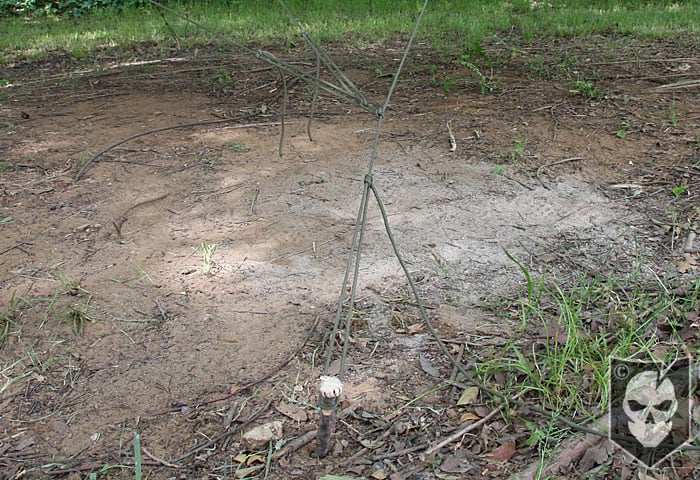Today we’ll wrap up the last part in our Knot of the Week mini-series on rigging a tarp shelter.
I left off in part 2 with explaining how the tarp is attached to the trunk line with Prusik Loops and Prusik Knots, and introduced the guy-line system. We’ll get more in-depth into that system as well as demonstrating the Alpine Butterfly Loop and the Taut-Line Hitch.
To create the guy-line system you’ll need at least five attachment points on each side of the tarp and quite a bit of paracord. As mentioned previously you’ll also need four stakes, but those can be made with a knife and some sticks you can typically find wherever you’re setting up at.
Guy-line Requirements
Before we get into how to tie these knots for the guy-line system, let’s talk paracord. I like using paracord for everything on this tarp, because I know I’ve always got 100+ feet of it at all times.
For each primary guy-line, that will be hitched around one of the four stakes, you’ll need 8-feet of paracord. The secondary guy-lines, on the next closest attachment points, will each require 5-feet and the tertiary lines need 6.5-feet.
In the video below, I’ve tied in each of the guy-lines to their respective attachment points using two half-hitches. Lately though I’ve been considering retying them with bowlines or something similar. The two half-hitches hold just fine, but taking the tarp in and out of the stuff sack I’ve noticed that I occasionally have to re-tighten them.
Cutting all the necessary paracord for the entire tarp shelter will take some time, but once its in place you can set-up and tear-down the tarp in a matter of minutes. Practice makes perfect though, so throw the tarp up in your backyard on occasion to practice setting it up.
Alpine Butterfly Loop
(Strength: 5/Secure: 5/Stability: 3/Difficulty: 4)
An Alpine Butterfly is used to put a loop in a line that has tension coming from both ends. This knot will not weaken the strength of the line and is used by climbers and mountaineers to tie in a climber for protection against a fall.
Tying Instructions: Please refer to the photos here and YouTube video below.
[flickrset id=”72157624094253156″ thumbnail=”square” overlay=”true” size=”medium”]
Taut-Line Hitch
(Strength: 3/Secure: 3/Stability: 3/Difficulty: 3)
Not only will the primary guy-line have a Taut-Line Hitch, but each secondary and tertiary guy-line will also use one after being routed through the Alpine Butterfly Loop. This will again allow you to individually adjust the tension on these guy-lines to mitigate the amount of flex the tarp has in windy conditions.
Tying Instructions: Please refer to the photos here and YouTube video below.
[flickrset id=”72157624094230066″ thumbnail=”square” overlay=”true” size=”medium”]
Closing Notes
Knot tying truly is a depreciable skill-set, and one that I hope everyone takes an interest in and passes along to friends, family and co-workers. With today’s generation of people that are completely dependent on all the fancy gadgets and electronics (guilty), developing skill-sets like these and retaining them is even more important.
Let me know if you have any questions about any of the knots used in this mini-series, and I hope you’ve enjoyed it. Now get a tarp and practice!
Oh, and before anyone asks, I don’t know why I said “happy tarping” at the end of the video, I know it’s absurd and I couldn’t edit it out!
Links to Part 1 and Part 2 of the series in case you missed them!
